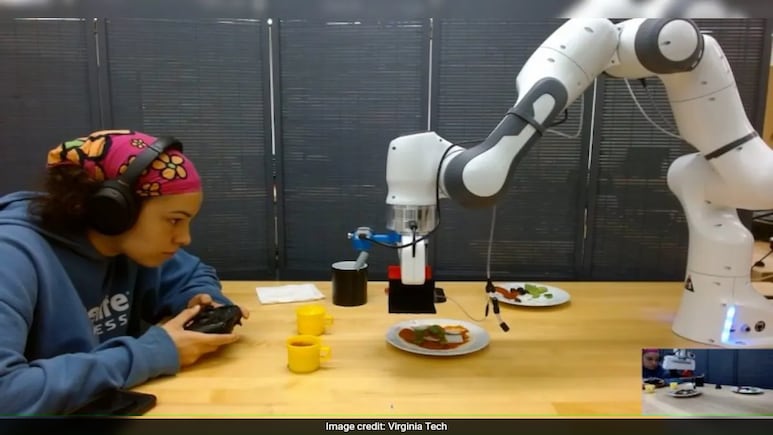
Engineers have developed a robotic system that aims to help people with mobility impairments and face difficulty in doing routine work, such as cutting and chopping vegetables," Virginia Tech reported. The system has an arm equipped with an adaptive gripper that can handle objects of all sizes and textures with precision and care. The technology is ideal for handling fragile produce, baked goods or other sensitive food items.
Other robots grasp objects with either soft grippers or rigid end-effectors. But both grippers have some fundamental limitations. The researchers in the study wrote that soft grippers struggle with irregular heavy objects, whereas rigid grippers often cannot grasp numerous small items.
Also Read | Top AI Researcher At Thinking Machines Lab Turns Down Meta's $1 Billion Job Offer: Report
To tackle the problem, they introduced RISOs, a mechanics and controls approach for unifying traditional RIgid end-effectors with a novel class of SOft adhesives.
"Our philosophy is that if you are going to provide someone with a robot that can help them, it needs to have a connection to the way a person performs the same task," Dylan Losey, associate professor of mechanical engineering, said as quoted by Tech Xplore.
"This makes the actions of the robot more of an extension of a person's natural movements. It's not enough just to build functional robotic systems; the systems need to be user friendly and intuitive."
The researchers said that RISOs can use either the rigid end-effector (pinching the item between nondeformable fingers) or the soft materials (attaching and releasing items with switchable adhesives) while grasping an object.
"This enhances manipulation capabilities by combining and decoupling rigid and soft mechanisms," the researchers wrote in the study.
Also Read | 'You're So Ugly It Hurts': How Cyberbullying Harms Teenage Girls, Shows Research
As per the report, the team recently programmed the robot to receive commands from a joystick and also created a soft, bubble-like fingertip for the robotic hand that slightly deflates while making contact with an object, creating an adhesive bond.
The researchers also used artificial intelligence (AI), which helped the robot to interpret the commands to decipher what the human was trying to do. After that, it used data to help complete the task.
"In the long run, we would love to create robots that could pick up any sort of object," Losey said. "They could be soft, rigid, large, small, or made of different types of textures. If you are someone who needs a robot to help you in your day-to-day tasks, it would be great if that robot could help you make lunch or put together that sundae that you wanted."
Track Latest News Live on NDTV.com and get news updates from India and around the world

